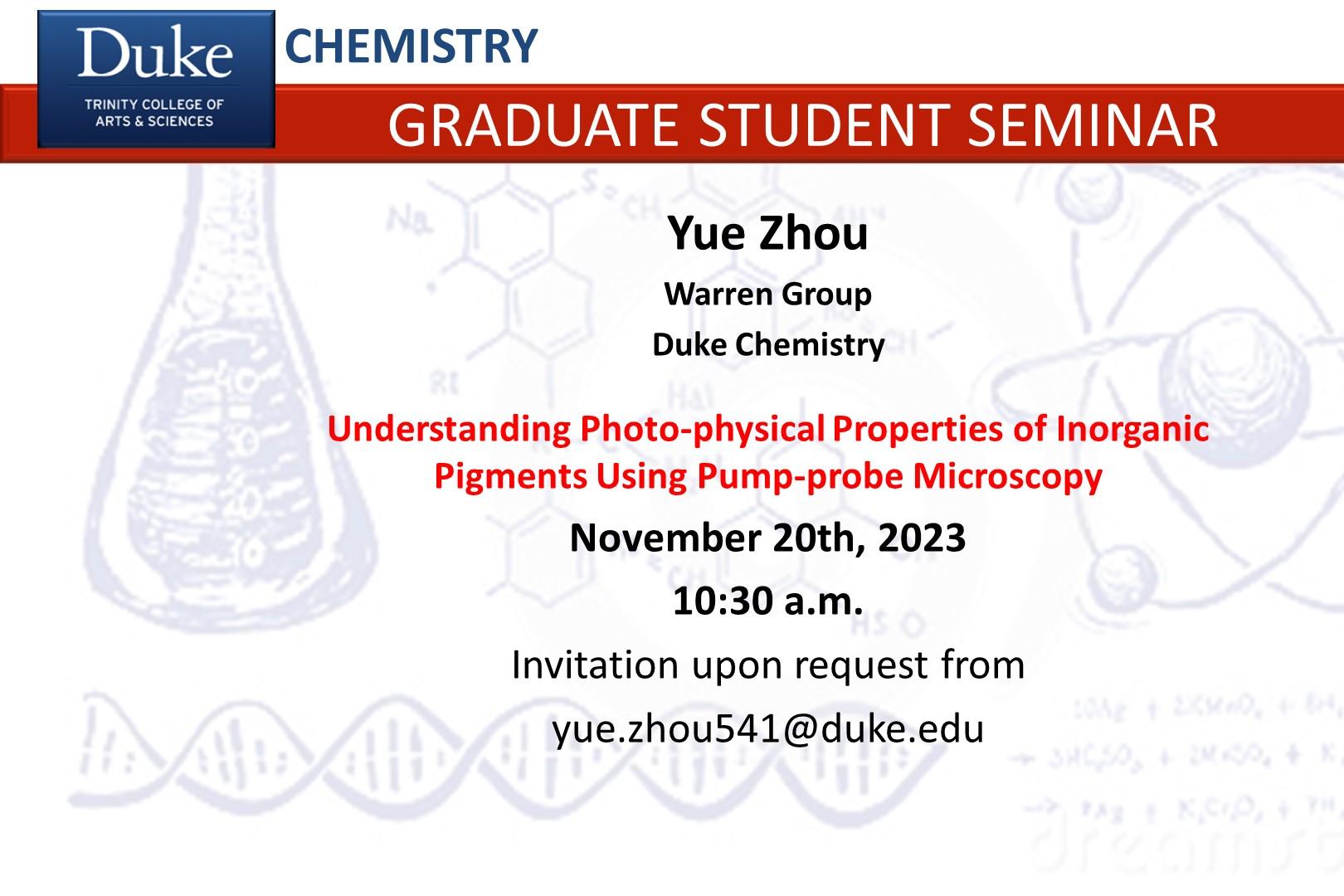
Speaker:
Yue Zhou, Ph.D. Candidate
Yue Zhou, Ph.D. Candidate
Warren S. Warren Ph.D., Advisor
Abstract: In cultural heritage science, art characterization and conservation encounter several complications. Artworks typically contain mixtures of multiple pigments along with impurities, additives, and binders, leading to many undesired alterations and causing difficulties in identifying individual pigments. Conventional analytical techniques typically suffer from the trade-off between chemical specificity, spatial resolution, and invasive sampling. This trade-off limits the current understanding of the characterization, identification, and degradation of historical pigments in works of art. To address these limitations, this dissertation introduces pump-probe microscopy as a noninvasive approach to image various historical pigments by accessing their intrinsic photophysical dynamics with high chemical specificity and spatial resolution.
In this dissertation, I demonstrate the application of pump-probe microscopy in creating three-dimensional virtual cross-sections to visualize the artificial degradation of CdS oil paints. Pump-probe microscopy can nondestructively detect the onset of early-stage CdS degradation of small particles and on the surface of large particles. This artificial degradation only occurs on reproduced CdS following historical recipes instead of commercial CdS. These findings suggest the particle dimension and pigment quality can affect the CdS degradation.
Furthermore, the pump-probe technique can also provide stoichiometry information on cadmium red (cadmium sulfoselenide) pigments by the mathematical fitting of a series of pump-probe dynamics at multiple wavelength combinations. This allows us to correlate the dynamic lifetimes with the chemical compositions of the corresponding pigments, opening the possibility to reveal the stoichiometry of unknown cadmium pigments.
In addition, I extend the application of pump-probe analysis to nondestructively identify copper-based green pigments. Moreover, this technique has proven helpful for tracking the degradation of ultramarine blue.